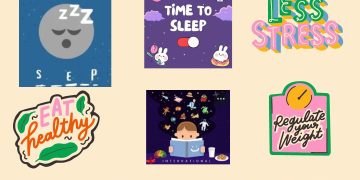
Eating Disorders Among Adolescents in India

E is for Eating Disorders Among Adolescents in India. for #BlogchatterA2Z. Adolescence is an age marked by rapid growth and physical development. A nutritious diet is crucial for teenagers to achieve their full growth potential. It enhances their overall health and well-being and reduces the likelihood of chronic diseases in later life. In the teenage years, it is typical for young individuals to experience dieting habits. And they worry about their physical appearance.
Eating Disorders Among Adolescents in India
The rise in the number of adolescents experiencing eating disorders is a cause for concern. Research on the root causes and identifying specific high-risk groups that require treatment is the need of the hour. As obesity rates continue to rise, there has been a greater emphasis on weight loss, dieting, and physical activity. Youngsters who engage in moderate dieting are six times more likely to develop an eating disorder.
Different kinds of Eating Disorders
Eating disorders encompass a variety of psychological disorders that involve abnormal eating behaviours. They have detrimental effects on one’s health. There are several types of eating disorders, including anorexia nervosa, bulimia nervosa, binge eating disorder, pica, rumination syndrome, and avoidant/restrictive food intake disorder (ARFID). Among these, bulimia nervosa is a prevalent eating disorder that affects children and adolescents.
- In Bulimia nervosa, there are recurring episodes of binge eating. Some people eat a lot of food and then get rid of it by vomiting; not eating or exercising too much. Medical professionals who observe signs, symptoms, and eating habits usually diagnose eating disorders. Physical examinations, psychological evaluations, blood tests, and urine tests may follow this initial assessment.
- Cognitive behavioural therapy (CBT) is the most commonly used form of treatment for eating disorders. Other treatment options include antidepressants, hospitalization, and nutrition counselling. It is important to seek professional help to address these disorders and promote a healthy relationship with food.
- Children who experience eating disorders frequently display extreme behaviours concerning food. A comprehensive understanding of the warning signs is necessary. Only then try the available treatment.
Firstly, it is crucial to identify the warning signs to provide timely intervention.
Eating Disorders Among Adolescents in India
Some common indicators of eating disorders in children include-
- Experiencing significant weight loss
- Obsessing about body image
- Practicing extreme dietary restrictions
- Engaging in secretive eating habits
- Partaking in excessive exercise.
- Emotional and behavioural changes
- Irritability, anxiety, depression, and social withdrawal.
- Develops irregular sleep patterns
- Experiencing faintness or fatigue
- Irregular menstrual cycles
- Disinterest towards food
- Withdraw from Social interactions and activities
- Avoid eating with peers
Identifying these signs helps intervene early, enhancing treatment success.
Treatment
- When considering treatment options, it is necessary to take a multidisciplinary approach.
- If your teenager has received a diagnosis of an eating disorder provide support and be proactive.
- Engage in open conversations with your teenager
- Promote positive eating habits and self-acceptance
- Participate in their recovery process.
- Seek age-appropriate treatment for eating disorders for your teenager
- Educating yourself about eating disorders, affecting adolescents.
- Seek help from a qualified psychologist
- Avoid consulting therapists who lack proper training or expertise.
- For severe instances, hospitalization might be required. This is to stabilize the child’s physical well-being and administer intensive therapy.
- Nutritional guidance holds significant importance during this procedure. It aids in reestablishing healthy eating habits and guides on proper nutrition to both the child and their family.
- Psychotherapy, particularly cognitive-behavioural therapy (CBT), is the initial treatment.
- CBT supports young individuals in changing their negative body image thoughts and finding healthier ways to cope.
- Family-based therapy is another effective approach, especially for younger children. The treatment involves the whole family, aiming to support, educate, and improve communication. This method fosters a nurturing atmosphere. It enables parents to comprehend and tackle the root causes that contribute to the eating disorder.
- It is crucial to acknowledge that every child is different. We must tailor their treatment to meet their requirements. Consistent monitoring, continuous therapy, and support groups are advisable. This is to ensure recovery and minimize the risk of relapse.
- It is vital to seek additional assessment, therapy, and ongoing support from a qualified expert. Eliminate any potential underlying factors leading to an eating disorder. To address eating disorders in young people, early detection of warning signs and a holistic treatment approach are vital. By incorporating psychotherapy, nutritional guidance, and family-centred therapy, we can help adolescents live a more nourishing lifestyle.

I am participating in #BlogchatterA2Z
B-Bullying-A growing concern for Adolescents










That’s a quite useful and crucial topic you covered. Most of the time people even don’t understand they are having eating disorder even after having it for long time.
I dont know why but I am addicted to eating different types of biscuits, chocolates… Is it a disorder too?
Yes, it is.